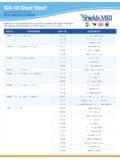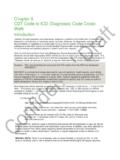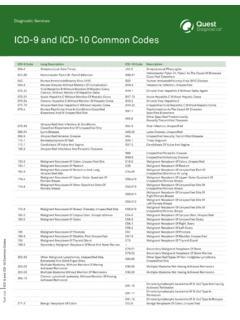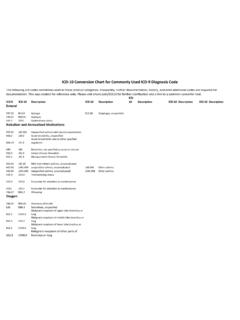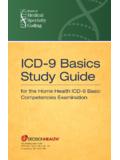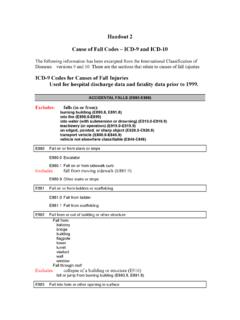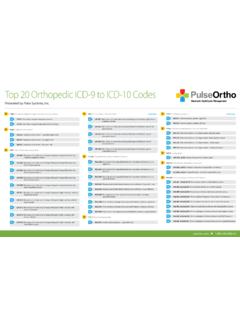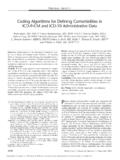Transcription of Sepsis Coding Decision Tree in ICD-9 and ICD-10
1 2015 DecisionHealth Toll-free: 1-855-225-5341 Sepsis Coding Decision tree in ICD-9 and ICD-10 Follow the directions specified in this tool, created by Brandi Whitemyer, HCS-D, product specialist for DecisionHealth in Gaithersburg, Md., to help you assign the right code(s) for Sepsis and related conditions. What s the diagnosis in ICD-10 ? Bacteremia Code (Bacteremia). Septicemia There is NO code for septicemia in , you re directed to a combination A code for Sepsis toindicate the underlying infection, such ( Sepsis , unspecifiedorganism) for septicemia with no further detail.
2 Note: A codesfor Sepsis in ICD-10 include both the underlying infection(septicemia) and the body s inflammatory reaction. SIRS (Systemic inflammatory response syndrome) First, determine if the SIRS is related to an infectious origin. If Yes, assign a code for Sepsis . Follow instructions for Sepsis Coding and determineif organ dysfunction is present. If it is, you ll need toinclude a code from , Severe Sepsis . If No, assign a code first for the underlying cause of theSIRS (such as for heatstroke), followed by for SIRS of non-infectious origin.
3 Sepsis Choose the correct A code to indicate the locate the code for the correct type of infectious processthat is causing the Sepsis , such as ( Sepsis due toEscherichia coli [E. coli]). Note: The underlying systemic infectionand the body s inflammatory response to it are captured in onecombination code. Severe Sepsis First choose the correct code for the underlyinginfection, such as ( Sepsis due to Escherichia coli [ ]), then code the severe Sepsis , such as (Severesepsis without septic shock) and then assign an additional codefor the organ dysfunction it s causing, such as (Acute andsubacute hepatic failure without coma).
4 Septic shock Code first the underlying infection (forexample , Sepsis due to Escherichia coli [E. coli]), thencode the severe Sepsis combination code that indicates thepresence of septic shock ( , Severe Sepsis with septicshock) and lastly code the associated organ failure (such , Acute respiratory failure, unspecified whether withhypoxia or hypercapnia).What s the diagnosis in ICD-9 ? Bacteremia Code (Bacteremia); use an additionalcode to identify causative organism ( , Bacterial infection inconditions classified elsewhere and of unspecified site).
5 Septicemia Choose a code from (Septicemia)depending on the information given. Is Sepsis also present? Yes. also assign ( Sepsis or Severe Sepsis ) No. code is sufficient Tip! Query physician toverify that no diagnosis of Sepsis is present. In ICD-10 , Septicemia may not be coded alone (codes for Sepsis include Septicemia). SIRS (Systemic inflammatory response syndrome) Identify the underlying trauma or infection then choose a codefrom (Systemic inflammatory response syndrome (SIRS))depending on the information given.
6 SIRS is defined as a clinical response to an insult, infection ortrauma. The causative infection or trauma should be coded first. Tip! codes may never be assigned as primary! Sepsis Code first the underlying systemic infection, such (Streptococcal septicemia), and then assign forthe Sepsis Severe Sepsis Code first the underlying systemic infection,such as (Streptococcal septicemia), then code forsevere Sepsis , and finally code the specific type of organ failure,such as for acute renal failure.
7 Tip! Severe Sepsis is defined as Sepsis with associatedorgan dysfunction. Septic shock Code first the underlying systemic infection,such as (Streptococcal septicemia), then code severe Sepsis , then code for septic shock and finallyassign the code for the specific type of organ failure inherent toseptic shock, such as for acute renal failure.





